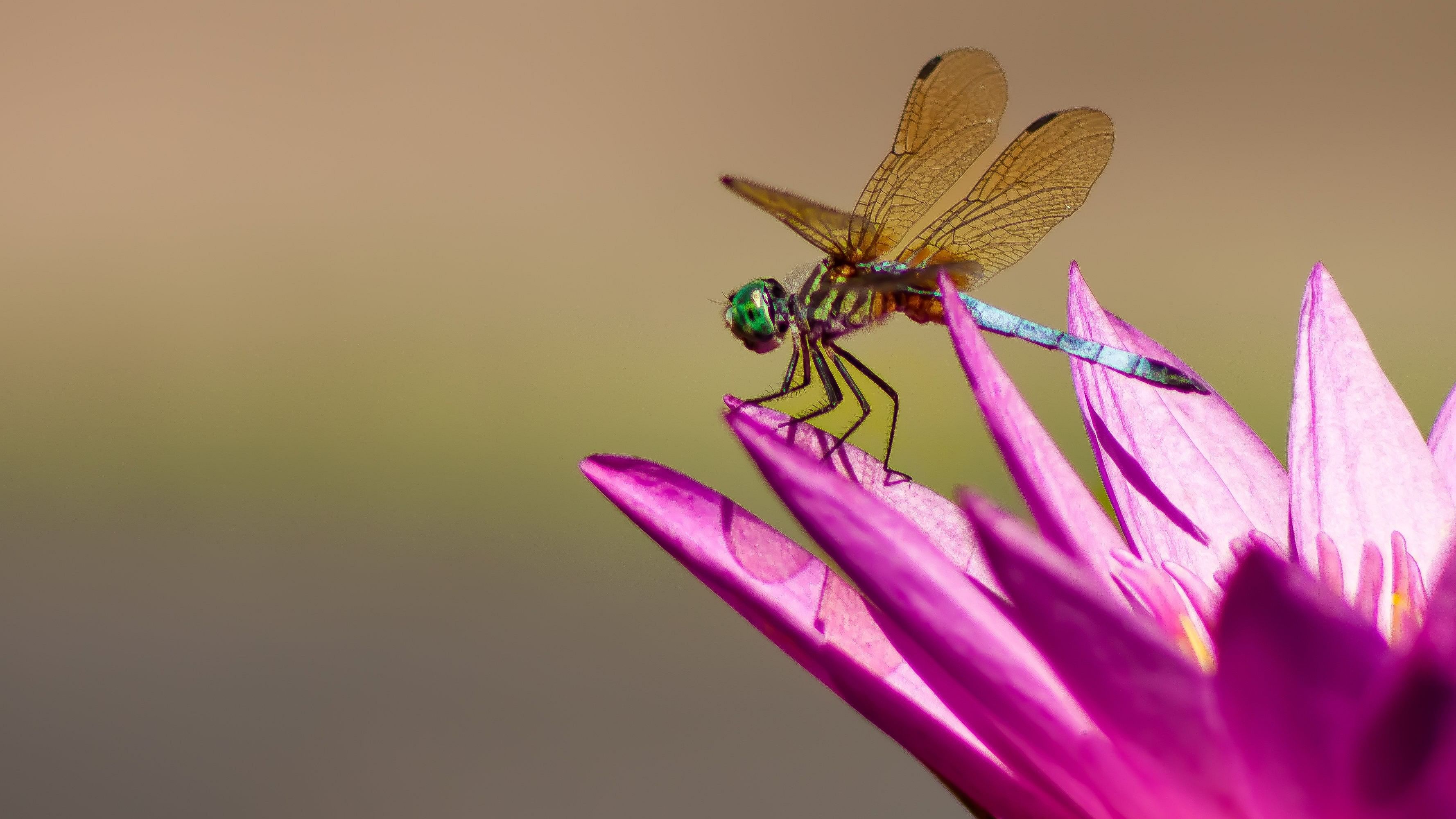
Credit: Special Arrangement
Around 325 million years ago during the earth’s Carboniferous period in the late Paleozoic era, giant insects called griffinflies flapped about on expansive wings spanning two feet in the vast skies over prehistoric swamp forests and 100-foot trees. They were the first insects to master flight, 100 million years before the dawn of the dinosaurs.
Their present-day descendants, the dragonflies, dart about over the wild grasses around Navilu Kaadu, borne on wings barely two to three inches across.
It is early October as I write this, and the land is drenched with heavy showers, setting the stage for the dance of the dragonflies. Just beyond the cottage, a swarm of acrobatic dragonflies flit about hunting, procreating, and turning into crunchy morsels for the similarly acrobatic green bee-eaters (Merops orientalis).
A lone dragonfly, the common clubtail (Ictinogomphus rapax) glides into the cottage and forms a graceful silhouette on the window, specks of sunlight glinting off gossamer wings.
Dragonflies belong to the order Odonata — Greek for ‘toothed one’ — alluding to their serrated teeth, a feature that perhaps gave them the ‘dragon’ moniker. Odonata includes damselflies too, the dragonfly’s slimmer cousins, with over 7000 species worldwide and more than 500 species in India.
Here is how to tell the two apart. The damselfly is slender, as against the stout build of the dragonfly. The damselfly’s hindwings and forewings are roughly the same size and fold up over or along its body when at rest. The dragonfly, on the other hand, has wider hind wings, and both pairs of wings are wide open when at rest, like an aeroplane.
Some scientists go as far as to term dragonflies the fighter jets of the insect world, a fitting metaphor for their matchless flight control. Strong thoracic muscles allow dragonflies to flex each of their four wings individually. They can pull off 180-degree spins, hover mid-flight like a chopper, fly in reverse, nosedive, and shoot up. I suspect their incredible flying feats inspired the idea for Iron Man’s fancy flying suit!
A pair of large compound eyes give them outstanding vision allowing them to see ultraviolet and polarised light and bestowing a wide field of vision except behind their head.
The lives of dragonflies are intertwined with water. Males and females mate on the wing and the females across species make slits in plant stems near water bodies and deposit eggs, or drop the eggs into a water body. A single batch can contain hundreds and even thousands of eggs.
The young of the dragonflies are entirely aquatic. Called naiads or nymphs, they start life as formidable predators. They have powerful extendable jaws called labrum, complete with menacing hooks and spines that can shoot out and impale prey. They devour tadpoles, mosquito larvae, worms and even small fish in their watery abodes. Adult dragonflies hunt flying insects — mosquitoes, moths, flies, beetles, bees and more.
Dragonflies live out most of their lives as naiads, for up to three years. They have short adult lives of about a month or less. Dragonflies are hemimetabolous (undergo partial metamorphosis) — unlike butterflies, they skip the dormant pupal stage and go straight from being naiads to adulthood with 6 to 15 metamorphoses in between.
The naiad eventually emerges from the water, climbs onto a plant and moults into an adult dragonfly. The newly minted adult called teneral, is pale and wet, with wings folded back. Once dry, it spreads out its delicate, lacy wings, takes to the skies, and acquires exquisite iridescence over time.
The nymphs breathe underwater with gills in their rectum that double up as propellers. As land-dwelling adults, they breathe through holes in their bodies called spiracles. Dragonflies leave crops alone, do not spread diseases and keep pests in check. They are great bioindicators and can offer vital clues to the health of ponds, rivers, streams and the general ecosystem. Overall, these are good bugs to have around.
One of their ilk, the globe skimmer (Pantala flavescens), a widely distributed dragonfly species, has the longest migration of any insect — 14,000 kilometres from India to East Africa and back across the Indian Ocean.
With wetlands and water bodies under stress from anthropogenic pressures, dragonfly habitats are shrinking. Is it any surprise then that we in Bengaluru suffer pesky mosquitoes?
Rooting for Nature is a monthly column on an off-kilter urban family’s trysts with nature on a natural farm.
The author chipped away at a software marketing career before shifting gears to sustainable entrepreneurship and natural farming. She posts as @ramyacoushik on Instagram. Reach her at bluejaydiaries@gmail.com